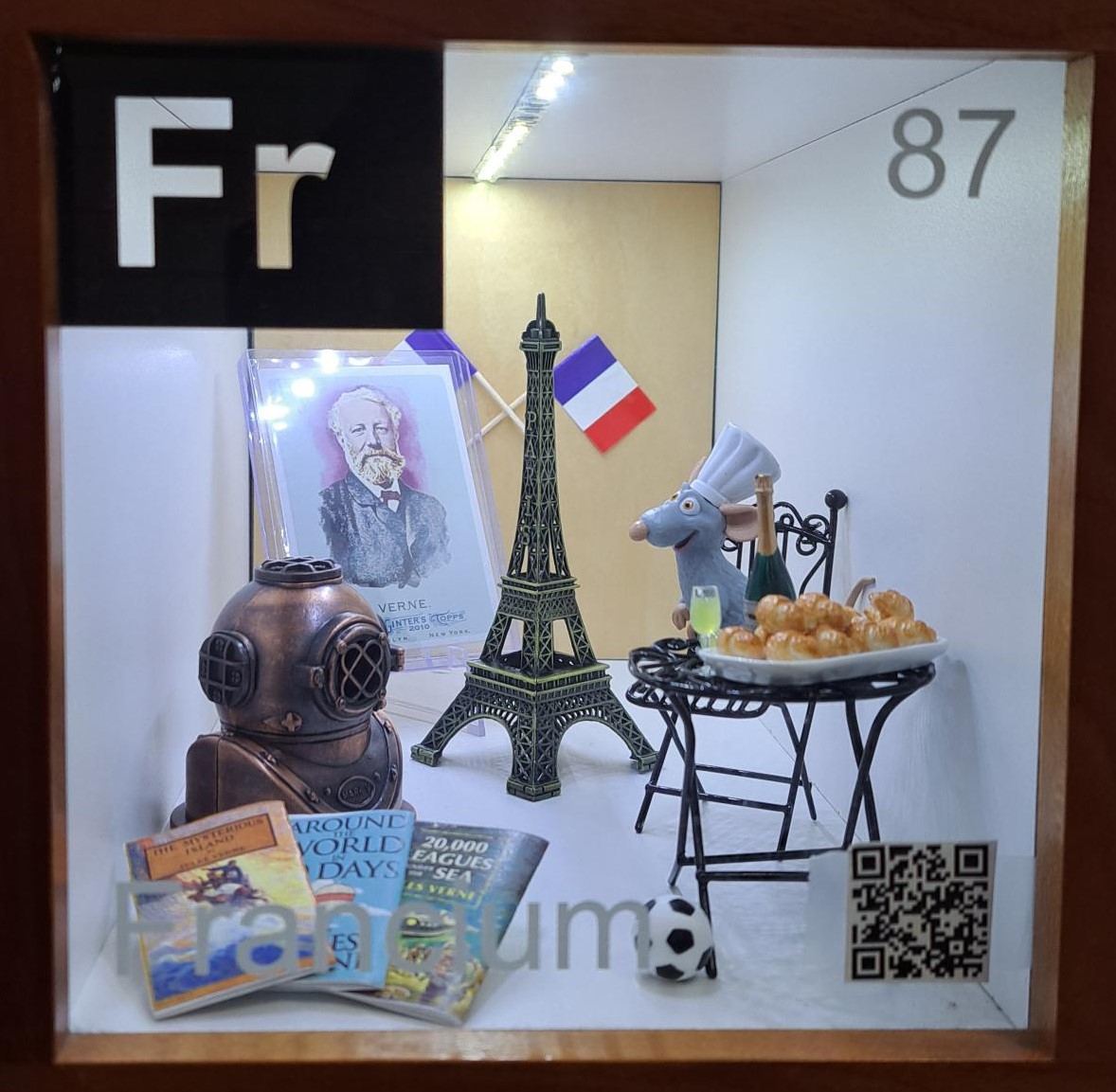Francium

About the Display:
Francium was discovered by Marie Curie’s former assistant Marguerite Perey in 1939 by studying the radioactive decay of Actinium. This discovery made her the first woman to ever join the French academy of sciences, and established her as a world-class expert in nuclear physics. Unfortunately, like Curie before her, working with radioactive chemicals eventually led to her death by radiation-induced cancer in 1975. Due to its short, 22-minute half-life, francium cannot be isolated in any significant amount and has yet to find any practical uses.
Jules Verne was a French science-fiction writer from the late 19th century known for his best-sellers twenty thousand leagues under the sea, around the world in eighty days or journey to the center of the earth. His writings have a unique combination of imaginary but realistic scientific machinery and fantastic journeys to remote locations. Scientific readers will prefer its lesser known The mysterious island or Paris in the twentieth century.
About the Contributor: Géraud Valentin is a French Ph.D. student at the University of Toledo. France was a bit lacking in the display, despite its role in the discovery of 15 elements and the three elements named after it: Francium, Lutetium (Lutetia, former Paris) and Gallium (Gaul, former France). This oversight has now been fixed, with a display featuring several prominent French specialties.

Back to the Periodic Table
| |-Onward to the next element!> |
Symbol: Fr
Atomic Number: 87
Atomic Mass: [223]
Electron Configuration: [Rn]7s1
Year Discovered: 1939
Discovered By: Marguerite Perey


